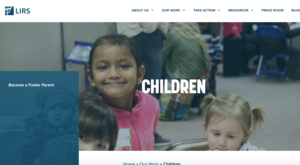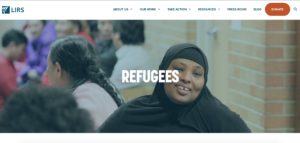Group Members: Rawan Mahmoud, Daria Mosley, Mariah Williams
Pitch
The alteration of hair used as an assimilation mechanism can be seen in the book Americanah by Chimamanda Ngozi Adichie. Most of our inspiration comes from the scene where Ifemelu, straightens her natural hair for a job interview. When her boyfriend asks why she straightened it, she says, “My full and cool hair would work if I were interviewing to be a backup singer in a jazz band, but I need to look professional for this interview, and professional means straight is best, but if it’s going to be curly then it has to be the white kind of curly, loose curls or, at worst, spiral curls but never kinky. (Adichie 252)”. This scene among others in the novel depicts how natural hair is viewed in the workplace by America’s society.
“Ever notice makeover shows on TV, how the black woman has natural hair (coarse, coily, kinky, or curly) in the ugly “before” picture, and in the pretty “after” picture, somebody’s taken a hot piece of metal and singed her hair straight? (p 367).”
In the United States, afro, kinky, and dread textured hair have been viewed negatively for decades. The Eurocentric standard, long straight hair has become America’s standard of beauty(“Beauty Is Pain” 1). Natural hair discrimination has been an issue for over 50 years. In 1981, a black woman employed by American Airlines was told her cornrows violated the company’s grooming policy (Kanigiri and Reidy 2). In 2017 the United States army updated the regulation 670-1 which authorized black men and women to wear dreadlocks, and twist on the job (Dirshe par.7). Cornrows are currently still prohibited hairstyle in the military. High-level managers in corporations advise that women should straighten their hair for an interview to have a better chance of getting a job. Americans equate straightened hair in the workplace with intelligence, hard worker, and socially acceptable (Kanigiri and Reidy 2). In a survey conducted by Essence, many black women in various professions stated that they feel comfortable wearing their natural hair to work. However many women also mentioned not having representation in the workplace causes them to confirm by putting their natural hair in an updo style (Dirshe par.11-18).
The medium we plan to use to portray this scene is a podcast. With a podcast, we will be able to have an open dialogue using the book Americanah, personal experience, and research to further the conversation on natural hair in America.
Script
Interviewer: Rawan
Ifemelu: Daria
Wambui: Mariah
Introduction– Interviewer: Welcome back to our show! Thank you for tuning in on our “Immigrant Experience” podcast. Today we are joined by two Wellson alumni, Ifemelu who immigrated from Nigeria. Ifemelu has resided in America for the last 10 years until recently she decided to move back to her home country. We also have Wambui with us today, a friend of Ifemelu who also immigrated from Kenya. Today the topic we will be discussing is natural hair in the workplace. Recently, I saw an article in the New York Times titled “New York City to Ban Discrimination Based on Natural Hair.” The article the New York City Commission on Human Rights announced in quote “ the targeting of people based on their hair or hairstyle at work, school or in public spaces, will now be considered racial discrimination” Hence people who have hairstyles such as locks, cornrows, twist, braids, Bantu knots, fades, afros have the right to keep their hair in an uncut or untrimmed state. How do you both feel about this reform? (Stowe par. 1-2)
Ifemelu: I love the fact New York City has recognized that companies do discriminate against black men and woman over their natural hair. I know that in 2015 the Marines approved braid, twist, and lock hairstyles which before was banned. In addition, in 2017 the Army lifted its ban on dreadlocks which again, was previously banned. I have friends that I met in the states who served in both the Marines and the Army. I feel it’s unfortunate and unfair that these individuals have put their lives on the line for an occupation that discriminates against embracing natural hair (Stowe par.17).
Interviewer: Yes, that is how I felt when reading the article. I hope that more states will reciprocate the actions of New York City. It is unfortunate that this is still a problem in many corporations in 2019. Well speaking of natural hair in the workplace:
Interviewer: Why do you feel it’s easier to get a job with non-natural hair?
Wambui: I think it is proven you can get a job with non-natural hair. In the academic journal by Bencosme, “Beauty is Pain: Black Women’s Identity and Their Struggle With Embracing Their Natural Hair.” Bencosme talks about how black women face societal pressures from a young age to become more eurocentric by altering their natural hair. Not to call Ifemelu out, but she had many people in her ear telling her to change her hair so that she would get the job. That’s not to say she isn’t qualified for the position, but the fact that everyone is telling her that her hair could potentially make or break whether she gets a job or not is beyond me.
Ifemelu: I completely agree with Wambui, and I would even go to the extent of saying that Americans do not like change. As a result of that, people are not willing to challenge traditional rules. For decades women have worn their hair straight in the workplace because straight hair is “labeled” as professional. However, when women of color finally want to embrace their natural hair, corporate America does not want to adjust to this change. To answer your question, yes I believe it’s easier to get a job with non-natural hair because in America straight hair is the norm.
Interviewer: What products do you use?
Wambui: Products I currently use are Cantu, natural oils, JBCO, and banana shea butter conditioner. Finding the right products has always been a trial and error. It is hard to find a product that is going to moisturize, strengthen, and soften your hair all in one. There will be products that say they do, but they do not. I believe finding a good priced product for 4C hair is hard to find. For those who do not know, 4C hair is the most coiled and coarse texture of natural hair.
Ifemelu: I use many of the same products as Wambui, I currently use the Shea Moisture JBCO line. I also like OGX biotin and collagen conditioner. As of lately, I am mindful of the products that I use in my hair. I do not like products that contain sulfates, parabens, and other chemicals I cannot pronounce. In Nigeria, we use many American and Nigerian made products, however, I feel the most effective hair products are natural ingredients such as Apple Cider Vinegar for shampoo, eggs, and yogurt for protein treatments, chebe powder, rice water, and rhassoul clay. Many ingredients I use are household items that you can find in your pantry.
Interviewer: Did you feel as if you were forced to straighten your hair?
Ifemelu: When I first came to America, I never realized that something as trivial as hair could have a huge impact on how people treat you and what type of job you get. I remember when my Aunty Uju passed her medical license examination test, she felt that she needed to take out her braids and relax her hair for the interview (Adichie 146). At the time it was hard for me to comprehend why my qualified aunt would need to prove to an employer through appearance why she’s qualified. However, throughout my life, I have felt the repercussions of wearing my natural hair. After college, it was hard for me to find a job, which I feel was due to my appearance. Therefore in order to provide for myself, I felt the need to straighten my hair.
Interviewer: When did you first encounter the stigma that natural hair isn’t “good hair”
Ifemelu: I believe my first encounter with the “good hair” stigma was during my childhood. Growing up my mother had long black relaxed hair. My father would often call my mother’s hair her “crown of glory”(Adichie 49). I always believed that when he said that he was implying that straight hair is superior. People would always ask my mother if her hair was real or if she was was from Jamaica. People within the African community never could believe that my mother’s hair grew so luxurious without being mixed with another race. I remember feeling hopeful when I got older my coils would become looser and my hair would eventually resemble my mothers. As I got older, I encountered this stigma again in secondary school. My best friend Ginika was voted the prettiest girl in school. Do not get me wrong Ginka is gorgeous however, I believe she was voted prettiest due to her caramel skin, and wavy textured hair (Adichie 67). Therefore, all my life I have witnessed the effect or advantage straighter hair has on others.
Wambui: I first encountered the good hair stigma through my own experience. When I first came to the states from Kenya I saw a lot of people around me with relaxers and blowouts. I use to hate the control my natural hair had over my actions. I noticed this in my colleagues as well. I hate how natural hair can easily sweat out and too many products will make it look greasy. I couldn’t even go swimming without chemicals damaging my hair. I always never witnessed or heard women with straight hair experience these problems so as a result, I believed my hair wasn’t good hair.
Interviewer: How do you feel about protective styles in the workplace? Braids, weave, etc
Ifemelu: I feel protective styles like braids, weave, and twist are beneficial for my hair. I enjoy not having to spend time doing my hair in the morning before work. I personally wear protective styles because of their versatility and simplicity. However, I do not appreciate the stares I get from my coworkers when I change my protective style. In Nigeria, women wear faux locks, braids, yarn twist, and wigs to work interchangeably. In my country, hair is a form of self-expression. In America, hair is a form of self-expression as well, but the self-expression has to be limited in the workplace. Bosses and coworkers, particularly from caucasian descent, feel long braids, and colorful weaves are “urban.” Often times, my coworkers question my hairstyles rather than ignore it or complement it. Although the stares bother me, I plan to continue to wear protective styles at work.
Conclusion- Interviewer: Well, that’s all the time that we have today. Thank you guys for being here today! We hope that this movement of women embracing their natural hair continues to grow and progress because it really is vital. Thank you guys for tuning in and make sure you tune in next week for our new podcast on immigration.
Annotated Bibliography
Adichie, Chimamanda Ngozi. Americanah (Ala Notable Books for Adults) (p. 250-367). Knopf Doubleday Publishing Group. Kindle Edition.
The author of Americanah, Chimamanda Ngozi Adichie, discusses multiple topics, such as love immigration, and race. Essentially, this story follows Ifemelu and the struggles she faces in both Nigeria and when she moves to America. Before leaving for America, Ifemelu believed that by moving there, her problems would become non-existent. However, that was not the case. Ifemelu had a hard time adjusting to America and it’s culture. She faced multiple different obstacles, which includes racism, discrimination, and depression. When Ifemelu came to America, she had a very difficult time trying to obtain a job due to her skin color, her accent, and her hair. Because of the fact that she could not obtain a job for a long period of time, she had to resort to working for a man that took advantage of her for a simple one hundred dollars. Because of this Ifemelu was pressured to conform. She felt that if she had straight hair and practiced her accent then people would not discriminate or be racist towards her.
Dirshe, Siraad. “Black Women Speak Up About Their Struggles Wearing Natural Hair In the Workplace.” Essence, Essence, 7 Feb. 2018, www.essence.com/hair/black-women-natural-hair-discrimination-workplace/.
This article, written by Siraad Dirshe effectively discusses the natural hair movement and the struggles that black woman face to wear their natural hair in the workplace. This source is a reliable source. Siraad Dirshe served as beauty editor for Essence Magazine. Her educational background is in Digital Marketing. Dirshe has also written additional publications for Vogue, Allure, Elle, Refinery 29, Teen Vogue, and Man Repeller. The article began by identifying the start of the natural hair movement in the mid-2000s. The author credits natural hair YouTubers, and natural hair blogs as being the start of when black women started to embrace their natural hair. The author ended the article by asking seven women from various occupations on their feelings and experiences of wearing their natural hair in the workplace. This article is written for black women who are in the labor force. This article contains hair terms for women who are familiar with natural hair textures. The genre is an article published in Essence Magazine in the hair category. This source demonstrates the discrimination black women face in the workplace. This source also supports the thesis through primary interviews, and references from the military regulations. This source will provide information to create and inspire dialogue to create change.
Meher Kanigiri, and Steven Reidy. “How Are Ethnic Hairstyles Really Viewed in the Workplace?” Cornell University ILR School, 2016, digitalcommons.ilr.cornell.edu/cgi/viewcontent.cgi?article=1133&context=student.
This article, written by Kanigiri Meher and Steven Reidy examines the controversy of African American hair when worn in natural styles such as afros, braids, dreadlocks. The theme of this article is to expose the stigma that society believes natural hair is unprofessional, unacceptable, and ugly. The study analyzed the importance of natural hair in black culture and assessed natural hair discrimination in the United States since 1981. The authors included the underlying theories of organizational culture and society’s desire to conform to an ethnic identity. The authors conducted secondary research on how job agencies feel about how appearance relates to intelligence. This source is a reliable source, implications are supported with case studies and percentages. This article is written to educate students at Cornell University. The genre is an academic journal published by Cornell University digital commons. This source supports our thesis that employers feel that individuals with straight hair are more preferable candidates. This source was created to provide information on the discrimination that black woman have faced in the workplace since the 1980s. This source will create dialogue for employers to evaluate the issue as an organizational problem.
Parke, Phoebe. “Heads up! Africa’s Billion Dollar Hair Care Industry.” CNN, Cable News Network, 5 Feb. 2016, www.cnn.com/2016/02/05/africa/hair-care-africa-view-feat/index.html.
Phoebe Parke, author of “Heads up! Africa’s billion dollar hair care industry”, which was published on CNN, discusses the amount of money that is spent on hair in Africa. According to the data, it appears that Nigeria is the leading country in Africa, that spends the most on hair products. People in Nigeria spent approximately $440 million in hair products. The reasoning behind the increase in spending in Nigeria is due to the fact that they have an increase in their younger population and their usage of internet and cable TV has also increased, which is causing many of the consumers to become influenced on what they are viewing on the internet and TV. In the next couple of years, Euromonitor predicts that growth in the usage of hair product will continue to increase due to the rise of more natural hair and natural ingredients. While natural hair has become increasingly more popular, social media is still pushing the idea that black women with long and straight hair, are more attractive and have it easier when it comes to managing their hair. The article also happens to discuss the top leading hair brands in Africa. HACO Tiger Brands, L’Oreal East African, PZ Cussons East Africa, Procter & Gamble, and Amka Products, all happen to be the top leading hair product brands in Africa.
Stowe, Stacey. “New York City to Ban Discrimination Based on Hair.” The New York Times, The New York Times, 18 Feb. 2019, www.nytimes.com/2019/02/18/style/hair-discrimination-new-york-city.html.
This New York Times article written by Stacey Stowe discusses a new placed in New York by the Commission of Human Rights, that bans any form of discrimination against hair, whether it be at school, out in public, or in the workplace. The article dates information from today and all the way back to the 60s with examples of discrimination against natural hair and specific hairstyles. This article can be seen as biased to other races as the article states examples of discrimination specifically from people of color. Stowe includes examples on all levels while noting how hair is perceived. According to the article in the 1960s, wearing your natural hair in an afro was seen as a political statement rather than choosing to wear your hair in its natural state. The article features an informational video directly from the Marines, showing hair regulations which feature, and is directed towards people of color. According to the article, almost 18% of the United States soldiers are black. In 2015 the Marines approved of hairstyles such as braids, twists, and locks. In 2017 the Army finally allowed dreadlocks. The article even mentions how discrimination against hair can happen at any age. According to the article, an 11-year-old and a 6 – year-old were sent home from school due to having braids and dreadlocks respectively. This article shines a light on injustices against hair and how a state like New York is making a change to the issue at hand.
“Beauty Is Pain: Black Women’s Identity and Their Struggle with Embracing Their Natural Hair.” Perspectives (University of New Hampshire), Jan. 2017, pp. 1–13.
The academic journal “Beauty Is Pain: Black Women’s Identity and Their Struggle with Embracing Their Natural Hair.” touches on the modern topic of what equates to “good” or “bad” hair for black women. The journal also discusses how natural hair is viewed and embraced in America. According to the journal, there is a culture of black women adapting to Eurocentric ways. Black women have resulted to mechanically and chemically straightening their hair to meet other’s standard of beauty while erasing their own. The journal mentions that straight hair is the norm in the workplace. According to the journal, a woman in West Virginia was fired from her job at a prison for having braids. The journal shows how hairstyles like braids, weaves, relaxed, and short hair are accepted, but it is taking longer for hairstyles such as locks, twists, and afros to be approved. The journal also notes the different textures of black hair that would be accepted in relation to America’s standard of beauty. The looser the coil, the more beautiful you are. According to the journal, black women have gained self-hate by altering their natural hair, and natural women are proving that the link between afros and the Black Power Movement is not always present. This journal breaks down the standard of beauty involving hair, and how society is restricting black women today because of it.

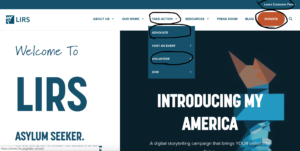
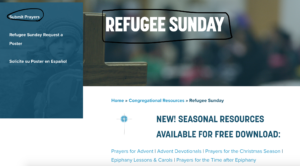

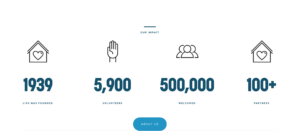

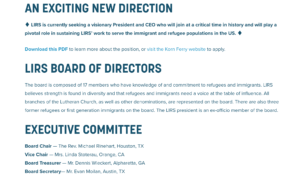
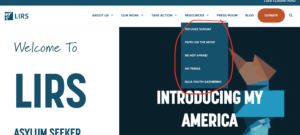 Modes of Communication:
Modes of Communication:
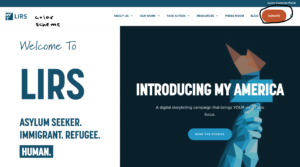


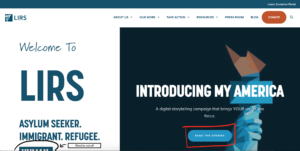 Gestural mode refers to facial expressions, hand gestures, body language, and interaction between people. Just by having the two videos up on their website, it is clear that there is a gestural mode throughout the website. Not only does the website include videos, but there are also plenty of pictures that depict emotion.
Gestural mode refers to facial expressions, hand gestures, body language, and interaction between people. Just by having the two videos up on their website, it is clear that there is a gestural mode throughout the website. Not only does the website include videos, but there are also plenty of pictures that depict emotion.